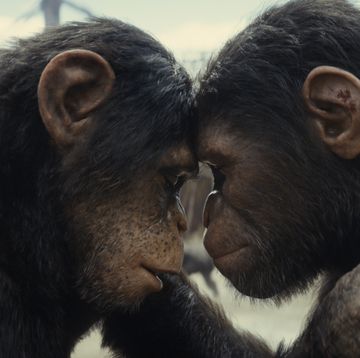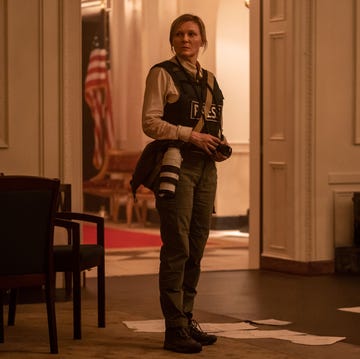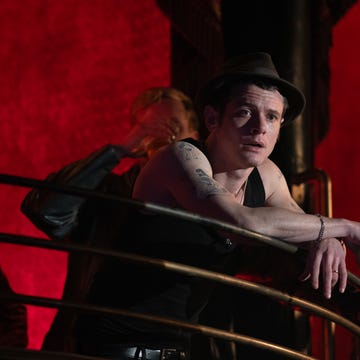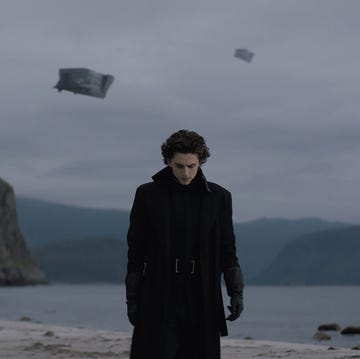“I felt like I was doomed,” says the familiar voice of John McEnroe in the opening minutes of McEnroe, a new feature-length documentary about the New York tennis legend – and more recently, commentator – which is out in cinemas today. Wait? John McEnroe, the same guy who, in 1979 at the age of 20, became the youngest male player ever to win the US Open, and would do so a further three times? Whose head-to-heads with his idol, Sweden’s Björn Borg, from whom he eventually took the Wimbledon title in 1981, are now considered some of the greatest tennis matches ever played? Whose record of 155 combined men’s singles and doubles titles has yet to be broken? Yep. That guy.
In fact, as director Barney Douglas’s glossy documentary reveals, McEnroe’s ascendancy in the world of tennis in the late 1970s and early 1980s was both a glorious and also a troubled time (weird! And he seemed like such a happy guy). Born into a military family – his father, also John, was in the US Air Force and later became his son’s manager – McEnroe, the eldest of three boys, was raised in Douglaston, Queens, where both his talent and his temper were apparent early on. Tennis, as archive footage of Borg, but also of Romania’s Ilie Nastase and America’s Jimmy Connors and Vitas Gerulaitis shows, was a time of strong characters (or in Borg’s case, a quiet character but a very strong look) and experiencing something of a boom. The young McEnroe wanted in.
McEnroe, who is interviewed for the film in what appears to be a high-end holding cell, and filmed walking – apparently all night long – through the streets of Douglaston and beyond, looks unbelievably fresh at 63 years old, with silver hair and a peak of silver chain to rival Connell’s. And he’s happy to re-tread the story of his tennis breakthrough, which, to anyone who knows anything about the sport, is all quite familiar stuff – the outbursts, the rivalries (notably Jimmy Connors, from whom, McEnroe says, he learned that sometimes, “you’ve got to be a prick out there”), and of course the exquisite and dynamic serve-and-volley game. Not that you mind, given what fun it all is to watch: all that terry-towelling, and the racquet-bashing, and the short shorts, and the clouds and waves (or in Connors’ case, helmets) of hair.
Less fun when you’re in it, though, says McEnroe. Or at least after a while. The nights out at Studio 54, the guitar jams with Chrissie Hynde and Ronnie Wood, a fondness for “performance-detracting drugs” like marijuana and cocaine, the high-profile relationship – in 1986, McEnroe married actress Tatum O’Neill – all started to take their toll. But perhaps more than that, McEnroe suggests, there was something in his personality, in his psyche, that wasn’t sitting right. “I’m the greatest player that’s ever played at this point,” he reflects, in the film, on that period. “Why does it not feel amazing?”
It seems extraordinary to say it, but in some ways, McEnroe is, ultimately, an anti-sport film. Or at least a film about sport that does not depend, unquestioningly, on the myth-making narrative potential of sporting endeavour to provide its momentum. In fact, the most insightful aspect of the documentary is McEnroe’s burgeoning realisation that tennis is not, it in fact, everything; and that while he’s been slowly, slowly coming to that awakening, he, and perhaps some of his loved ones, have paid a price. McEnroe’s five adult children – with whom he now appears to have good relationships – are interviewed for the film, as is his new wife, Patty Smyth (O’Neill, whose substance abuse issues led to McEnroe getting custody of their three children four years after their divorce in 1994, is not), and enable us to see this familiar personality in a new, more nuanced light.
And then there are interviews with the tennis legends – Billie Jean King, Peter Fleming, and, briefly, Roger Federer, Novak Djokovic, Rafa Nadal – who have insightful things to say (or in the latter instances, bland, media-trained praise) about the former world No. 1. But it is Björn Borg, also interviewed, who provides the film’s quiet subplot. Borg had a similar revelation about tennis to McEnroe, but earlier, in 1983, when he famously retired (for the first time) at the age of 26. “‘Do whatever it takes to win,’ you always hear that,” McEnroe says in the film. “You have to do whatever it takes to win at any cost. Is it all worth it in the end?” Borg, tanned and healthy in expensive loafers, sitting on the jetty below his idyllic Swedish island cabin, is saying nothing.
McEnroe is out in cinemas today and available to watch at home in September

Miranda Collinge is the Deputy Editor of Esquire, overseeing editorial commissioning for the brand. With a background in arts and entertainment journalism, she also writes widely herself, on topics ranging from Instagram fish to psychedelic supper clubs, and has written numerous cover profiles for the magazine including Cillian Murphy, Rami Malek and Tom Hardy.














